Everest Base Camp Trek
- 14 Breakfast
- 11 Lunch
- 11 Dinner
- Hotel in Kathmandu
- Lodges in Trek
- Trekking
- Sightseeing
- Scenic Flight

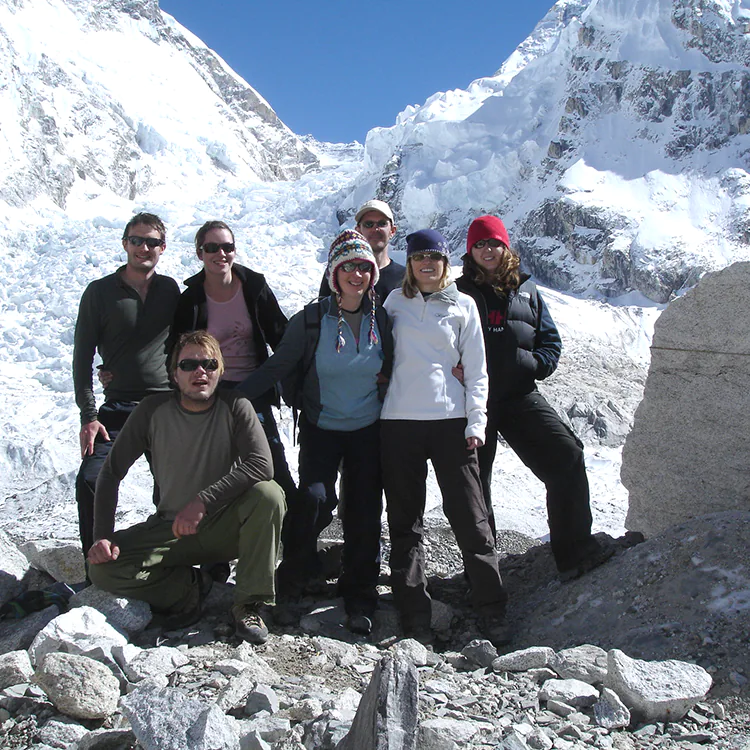
Everest Base Camp Trekking is one of the world’s most famous trails. You trek in the shadow of the world’s highest elevation; it is a breathtaking trip for every trekker willing to trek on this trail. The journey starts with the flight from Kathmandu to Lukla, a great adventure. Once you arrive at Lukla airport, the feeling is extraordinary as you land in the planet’s most adventurous airport. The sensation is full of thrill; the excitement to start this journey is joyous.
Nepal can provide you with any type of trek suitable for you, depending on the length and motive. Among all those, the Everest Base Camp trek falls among the top trekking destinations in the world, providing you with life-altering and magnificent Himalayan experiences. Nepal and Tibet are the two base camps of the highest mountain on earth. The South base camp lies in Nepal, whereas the Everest Advance Base Camp North lies in Tibet.
“Your attitude, not your aptitude, will determine your altitude,” as said by a famous person; people love high altitude and crave to reach a maximum height. Everest base camp in the South is at an altitude of 5380 meters (17,600 feet). Reaching this altitude is not difficult if you are fit and have a solid determination to reach your destination.
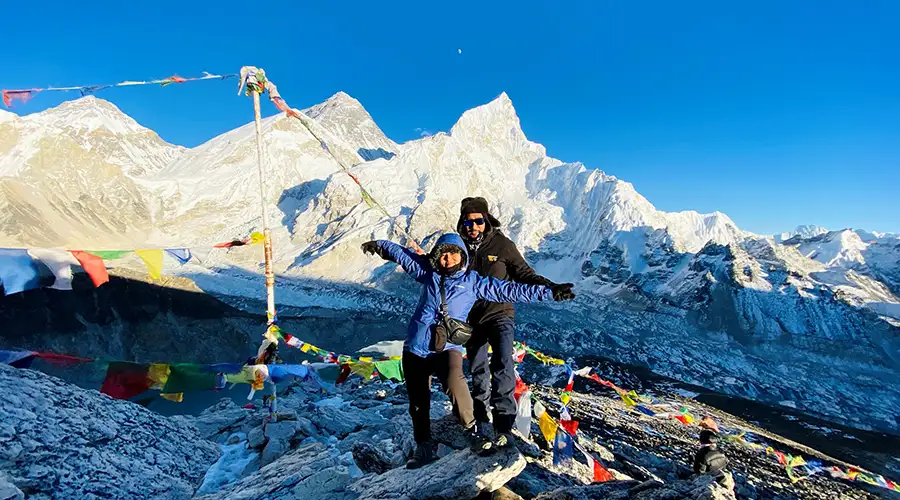
Kala Patthar - Mount Everest in the background
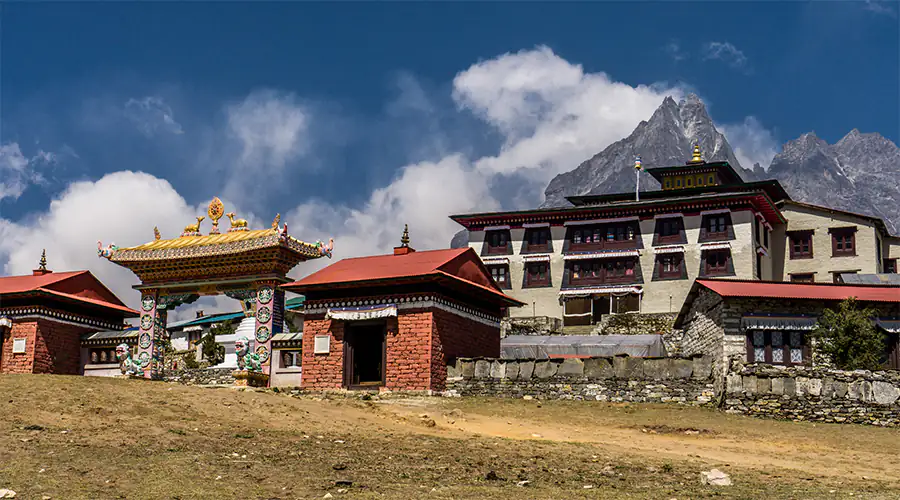
Tengboche Monastery
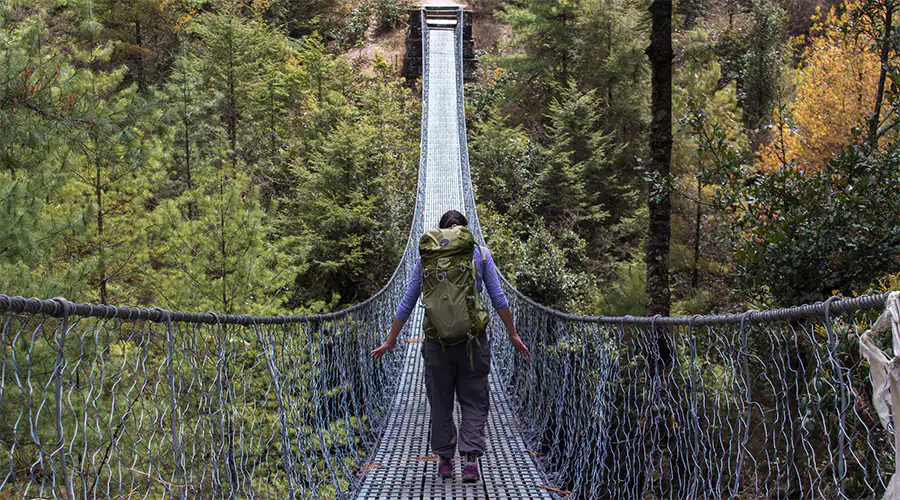
Crossing suspension bridge
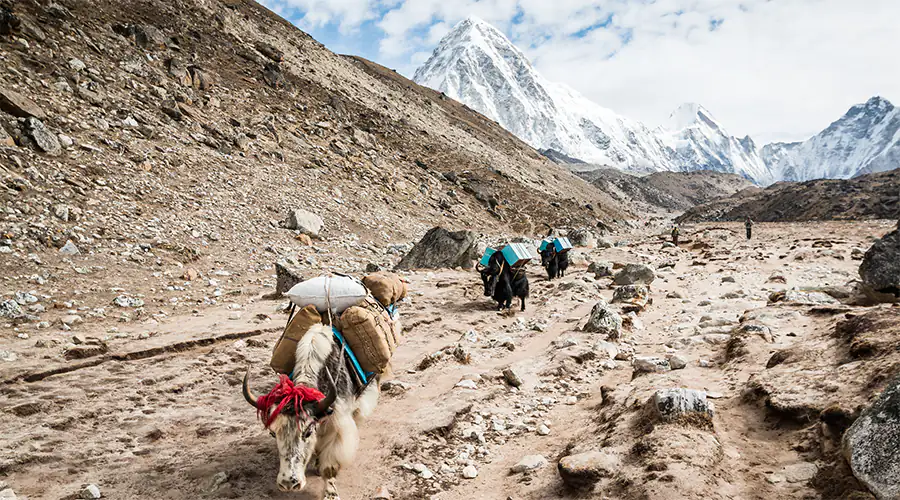
Jhopke - Used for transportation
Altitude: 1,350m/4,428ft
Welcome to Kathmandu – the capital city and the largest city in the country, rich in cultural heritage. Towering snowcapped peaks will accommodate you if the weather is clear. Complete your customs formalities, and we will be waiting for you in the arrival lounge. You will be transferred to your hotel. Later in the evening, our guide will brief you about the trek. Go to bed early – tomorrow is the big day for you.
Altitude: 2,800m/9184ft (Lukla) & 2,652m/8,698ft (Phakding) Walking Distance: Approx 8km (3-4 hours) – Flight time: 35 min
Your guide will escort you to the airport for a short morning flight Lukla – often referred to by many as the gateway to the Everest region. You will be rewarded with magnificent views of towering mountains during the flight. Feel the adventure when your aircraft land at the Lukla airstrip. You will be introduced to your porter at Lukla, who will accompany you for the rest of the trek.
The trek begins with a leisurely walk through the Chaurikharka village and descent towards Dudhkoshi River (2,530m/8,300ft). You will have your lunch at a small settlement called Thade Koshi. The trail moves along the banks of the Dudhkoshi River until Phakding (2,652m/8,700ft), where we will stay for the night to acclimatize. Enjoy your free time visiting the shores of the fast-flowing Dudhkoshi River.
Note: Per the Civil Aviation Authority of Nepal, the Lukla flight will be from Ramechhap Airport instead of Kathmandu Airport. We will provide Kathmandu to Ramechhap transportation service.Altitude: 3,440m/11,283ft Walking Distance: Approx 10-12km (5-6 hours)
You will wake up to the swashing of the fierce Dudhkoshi River. Enjoy breakfast at your hotel before hitting on the trail. Your destination for the day is Namche Bazaar – the biggest sherpa village in the Everest region. Cross the Dudhkoshi River on a long suspension bridge and walk through a beautiful pine forest to Monjo, a two-hour walk from Phakding. You will see soon approach the entrance to Sagarmatha National Park.
Stop here for a brief permit check and descend to the Dudh Kosi River toward Jorsalle, where you will have lunch. After lunch, an uphill walk to Namche after crossing the confluence of two rivers on a suspension bridge is a tough climb. But the views are rewarding. You will get the first glimpse of Mt Everest during the uphill walk. At Namche Bazaar, enjoy the Sherpa hospitality. Take a stroll in the evening to get a sneak peek at the daily life of the Sherpa people.
Altitude: 3,440m/11,283ft
You rest here today because you need to acclimatize to the high altitude before you gain further heights. Take a short hike to Everest View Point, an uphill walk that will help speed acclimatization. Visit the Sherpa museum to get an overview of the Sherpa culture and history of mountaineering. Or you can also hike to the Syangboche airstrip. Enjoy the weekly open market locally known as Haat Bazaar if it happens to be Saturday. You can buy from foodstuff to apparel and trekking gears in this marketplace.
Altitude: 3,870m/12,684ft Walking Distance: Approx 10km (6 hours)
The trek resumes after the acclimatizing break. You hit the trail after having early breakfast at Namche Bazaar. You can catch breathtaking views of mountain peaks like Everest, Nuptse, Lhotse, Amadablam, Thamserku, and Kwangde from the trail. After a short descent, you cross the river and start an uphill walk. The walk is mostly uphill, needing some uphill climbing at some places. Our destination – Tengboche – is one of the most popular villages in the Everest region. The area gets its name from the beautiful Tengboche monastery. The view of mountain peaks, especially Amadambalm, is quite breathtaking. Enjoy the guided tour of the monastery amid the chanting of sacred mantras by the young Buddhist monks before you call it a day.
Altitude: 4,400m/14,435ft Walking Distance: Approx 11km (6 hours)
You start the trek after having breakfast at Tengboche. The morning walk is pleasing as the trail passes through the rhododendron forest to Deboche. Cross the raging Imja River, which drains the Imja glacial lake, on a suspension bridge. After that, the trail is primarily straight to Pangboche village. Explore the town and meet the Sherpa people while your lunch is prepared. You can even hike to the Pangboche monastery – one of the oldest monasteries in the area. The trail after lunch is comparatively tricky as the greenery gives way to arid and deserted mountains. The beautiful Dingboche village waits for you.
Altitude: 4,400m/14,435ft
This is the last acclimatizing stop before the Everest Base Camp. Enjoy the hike to the Chhukung and Imja glacier and the high passes of Amphu Laptsa. Interact with the cheerful Sherpa people and know more about their lifestyle. Make the most of the rest day.
Altitude: 4,900m/16,076ft Walking Distance: Approx 11-12 km (6-7 hours)
The walk from Dingboche is a bit challenging due to the higher altitude. Take slow but steady steps as you prepare for Dungla. You can see memorials dedicated to climbers and trekkers who lost their lives in the Everest region over the years. Enjoy your lunch at Dungla. After lunch, you walk toward our destination for the day – Lobuche. This small Sherpa settlement rewards you with amazing views of Mt Lobuche, Mt Pumori, and Nuptse. Be ready for the cold night.
Altitude: 5180m/16,994ft (Gorekshep) & 5364m/17598 (EBC) Walking Distance: Approx 15km (6-8 hours)
Today is the D-day. The day starts after breakfast with a relatively easy trek to Gorakshep. It is a frozen lakebed covered with sand. It is the final stop on the Everest Base Camp trek. The trail to the Everest Base Camp from Gorakshep is more challenging as it passes through rocky dunes and moraine formed due to the accumulation of glacial debris. From the trail, you can also watch the famed Khumbu Glacier and icefall on Everest’s slopes. If you are lucky, you can meet climbers preparing for the Everest summit. Return to the warmth and comfort of your lodge at Gorakshep before the sun sets.
Altitude: 5,545m/18,192ft (Kalapathar) & 4,320m/14,173ft (Pheriche) Walking distance: Approx 12-13km (5-6 hours)
You start early today to catch the sunrise over Mt Everest from Kalapathar, which means black rock. At the break of dawn, you will be rewarded with the spectacular view of Mt Nuptse, Changtse and Lhotse bathed in the orange sun. Most probably, it will be the most unforgettable moment of your trek. Kalapathar offers you the opportunity to get some of the best shots of Mt Everest. You return to Gorak Shep for breakfast and start your return leg toward Pheriche. Expect a brisk walk on the return leg.
Altitude: 3,440m/11,284ft Walking distance: Approx 13-15km (7-8 hours)
You start the trek after having breakfast at your lodge. The trail from Pheriche to Tengboche is mostly downhill. Enjoy your lunch at Tengboche and start the downhill walk toward Namche Bazaar. Enjoy your last day on the lap of mountains.
Altitude: 2,800m/9,184ft Walking Distance: Approx 16km (6-7 hours)
After breakfast, you start downhill and walk through the pine forest to Jorsalle. Cross the confluence of Dudh Koshi and Bhote Koshi rivers on a suspension Bridge, pass through beautiful settlements, circumambulate mani walls and walk along the Dudh Koshi river. You reach Lukla in the evening to catch a flight the following day. Yes, you have done it. As this is your last night in the mountains, could you make the most of it?
Altitude: 1350m/4428ft Flight time: 35 min
Catch a flight to Kathmandu from the Lukla airstrip after breakfast. Our representative will be at the airport to escort you to your hotel. Enjoy the rest of the day; it’s a free day. We will serve you a farewell dinner at a typical Nepali restaurant in the evening. Enjoy cultural performances by artists while enjoying your meal. You can take pictures and even dance with them.
We can get an occasional delay in flight during the primary season. The weather condition of Lukla suffers from quick changes, which may affect inbound and outbound flights, so we have reserved this day for other activities. If we have a timely flight on DAY 14, we can use this day as rest or explore the day in Kathmandu. We can shop in and around local markets and plan a walk around the city.
Altitude: 1,350m/4,428ft
Your last day in Nepal! Grab your breakfast and do some last-minute shopping. Nepali handicrafts can be beautiful souvenirs for your friends and family back home. Our representative will escort you to the Kathmandu International Airport 3 hours before your flight.
Hope to see you in Nepal again !!
We will trek towards Phakding once our flight from Kathmandu lands at Lukla (2,860m). The trek to Namche Bazaar (3,438m) from Phakding will take approximately two and three hours. Similarly, following the northern trail from the Dudh Koshi River’s edge, we will eventually arrive in Tengboche (3,870m) from Namche Bazaar. Likewise, we will stop at Pangboche after 3 hours of trekking, passing through several Sherpa villages and monasteries. Dingboche (4,630m) will welcome us after another three hours of trekking.
We will eventually arrive at Lobuche after trekking through the productive Dingboche region and making solid progress. We will trek directly to Everest Base Camp from Lobuche, passing through Gorakshep (5,170m). We will ascend the Kalapathhar (5,555m) summit after trekking the Everest Base Camp. Within 4 hours of starting our trek from EBC, the continuous ascent will get us to Kala Patthar. In the same manner, we will then return to Gorakshep before arriving at Lobuche. Furthermore, taking the same route back to Lukla from Lobuche, we will fly back to Kathmandu and end this expedition.
What can be more adventurous than trekking on Everest’s base camp, the highest mountain on earth? Everest Base camp trekking is among the best destinations for high-altitude lovers worldwide. The fantastic beauty of nature is reflected in the laps of high-altitude mountains. Rhododendron forests and hills are famous attractions for travelers. The mesmerizing view of Mt. Lhotse, Mt. Nuptse, Mt. Amadablam, Mt. Pumori, and Mt. Thamserku can be observed on this trek. Everest base camp Trekking package lasts for 15 days or more. For further details, please feel free to inquire us.
Various cultures, ethnicities, and spirituality are spread throughout Nepal. The warm hospitality of the people in Nepal provides a fantastic feeling to the travellers, making an unforgettable experience for the trekkers. The poor, good-hearted Nepalese will benefit one way or the other from the expense of the trekkers. The journey to the Everest base camp begins from the capital city Kathmandu. Lukla, Namche Bazar is a lovely place to visit. The difference in the landscape and lifestyle of various areas within this small nation is beautiful. The Everest base camp trek is a perfect destination for trekkers.
Luxurious deluxe hotels are available in the capital city, Kathmandu, Lukla, and Namche Bazar, whereas comfortable local lodges are available on the trekking route. Hygienic food will be provided to the trekkers on the journey. The local foods and lifestyles of the people in these areas leave a sweet taste to the visitors.
Loyal and experienced guides will accompany and provide necessary details throughout the trek. Altitude sickness is one of the general queries to any Trekker willing to go to the Everest base camp trek. Our guides will inform us about necessary precautions and acclimatization rules during the trip, and trekkers will be provided with essential medicines if needed. The trekkers should carry the required equipment along with them. Porters will be available for trekking if needed by the trekkers.
The Everest Base Camp Trek is considered to be of a moderate to easy difficulty level. But to succeed on this expedition, you must be physically and psychologically fit. For this trek, your medical appearance should be excellent. Since there will be more elevation gain after Namche Bazaar, you should become ready to exert your endurance. It might not be appropriate for you if you have any lung-related health issues.
Furthermore, before going on a trek, doing cardiovascular exercise, stretching, and conditioning workouts will assist keep you upright on the trek. The ascent from Gorakshep will be tricky. The top of Kalapathhar also requires an elevation rise of about 200 meters from EBC. Therefore, Everest Base Camp Trekking requires the correct quantity of energy, often consuming food and drinks while on the trail.
Before the trek, you can also get some practice carrying backpacks and bags and hill running since you must have specific bag packs while on the trek; this will be a bit unconventional for you if you are a beginner. In addition, you may easily trek the Everest Base Camp if you are in good health and physical shape. Before Everest Base Camp Trekking, make sure to keep your physical and mental stability in better shape.
The spring revives the rich greenery of the Everest Region after the harsh winter. Likewise, spring runs from the first week of February to the last week of May. Because of the spring season, this region’s new atmosphere and incredible clarity add glitz to the excursion. There will be a massive wave of rhododendron, together with lofty pine woods, from Namche Bazaar to Dingboche. The midday temperature will be slightly over 7 degrees Celsius. As the midday temperature will be mild, you can pack a hat, shorts, and a vest to trek. Likewise, it will be below -5 degrees Celsius at night.
The Everest Base Camp trek is equally stunning in the autumn. A diversity of blossoms, rare species, and dense forests along the trail welcome you. In addition to this, the full view of several mountains is so clear attributable to the pleasant climate that it just mystifies you. The temperature during the day will be mild, hovering around 10 degrees Celsius, while the temperature at night is below freezing, below -8 degrees Celsius. The Everest region will also be undergoing a time of cultural events, which will be fascinating to see. Everything will be ideal for the Everest Base Camp Trek in autumn, including the weather and scenery. This season usually runs from September to the first week of November.
The Everest Region will see severe cold from the last week of November until the first week of February. Trek will be pretty unpleasant because the temperature will be below freezing. From Namche Bazaar to the Kala Patthar, the winter season brings a lot of snow. The amount of snow you see will increase with height.
The expedition will differ slightly from prior seasons, making it more difficult than average. Similarly, some trekkers may find the snowy landscape the most excellent part of the year. For such trekkers, this will be the best season. The daytime temperature will be less than -10 degrees Celsius, while the overnight temperature will be around -15 and -20 degrees Celsius.
Summer Season
From June to August, the Everest region experiences considerable rain, which makes trekking routes more strenuous and tedious. Heavy rain fell directly on these mountains due to the chilly, easterly “Bay of Bengal” breeze. The rain makes the environment murky with low clouds, preventing it from seeing the mountains and surrounding scenery.
Similar to this, there will be an intense sun over the region, raising the temperature to 15 to 20 degrees Celsius. The temperature drops below -5 degrees Celsius at night. Only adventurous trekkers would choose to join the trek during this season. Even though it rains nearly every hour of the day, the view of the vicinity becomes more evident after precipitation.
The EBC trek’s degree of difficulty ranges from simple to moderate. There isn’t much need to consider it because the trial will be straightforward with lots of uphill and downhill. Our primary target on this trek will be Kallapathar, 5555m. On some of the trekking routes, there will be an additional height increase that you should be aware of.
Everest Base Camp won’t be very simple to trek, but you may take safety precautions and other measures before attempting it. Altitude sickness is also possible with a height of more than 5000m, which might be problematic during the trek. Additionally, you may ascend to Everest Base Camp quickly if you have a robust and well-developed physique and flexible musculature.
Similarly, acclimatization days help to lessen fatigue and the danger of altitude sickness throughout the trek. Altitude sickness is less likely if you stay hydrated, eat meals that give you energy, and get enough rest. Apart from that, the Everest Base Camp trek is suitable for all levels of trekkers, from beginners to experienced ones.
Every teahouse in the Everest region will have electricity and charging infrastructure. The availability of charging points is not a concern. Additionally, you can pack a power adaptor if there is no electricity at a higher altitude. Further, certain teahouses may impose a surcharge for charging approximately USD 1 or fewer services. Similarly, when it comes to electricity, inclement weather might occasionally cause an electrical outage in the Everest Region.
Purchasing travel insurance is a crucial decision to make while trekking to Everest Base Camp. Trekking beyond 5000 meters is somewhat hazardous; anything may happen. Therefore to address the main problem, you can get travel insurance if something unpleasant occurs. Don’t forget to purchase travel insurance with more than 5000m of altitude.
There won’t be any problems rescuing you if you have travel insurance. As part of the travel insurance, there will also be helicopter rescues. Also, our personnel will always be there to help you if any problems arise with your health or any natural disaster. To evacuate you from such a scenario, there will always be a rescue team and a rapid response technical team ready.
At an elevation of 5555 meters, the Kala Patthar summit is the highest point you will encounter. It is the viewpoint of Mount Everest. Trekker goes there for sunrise and sunset view. It would help if you trekked from Gorak Shep to reach there, and you could leave your trekking stuff there.
You can charge your electronic devices in the teahouse. Some teahouses might charge small amounts.
Yes, it would help if you had Sagarmatha (Everest) National Park Permit and Trekkers’ Information Trekking System (TIMS) card to trek Everest Base Camp. We will arrange such types of paperwork in advance. For this, we need your copy of your passport and PP-sized photographs.
To trek Kala Pathar from Gorakshep, there will be an additional 200 meters of ascent.
Of course, you can purchase antiques while on the trek.
You should carry woolen scarves, caps, gloves, insulated upper clothing, and snow-resistant jackets. Please email us at sales@peregrinetreks.com for a detailed packing list.
Other adjacent mountains you may see while trekking is Lhotse, Makalu, Kanchenjunga, Cho Oyu, Ama Dablam, and other Himalayas of Mahalangur Himalayan Range.
Including helicopter rescue and itinerary information in your travel insurance is possible.
Flights from Kathmandu to Lukla will take about 30 minutes. It is an adventurous flight in a small aircraft. There is a regular flight from Kathmandu, and we will try our best to provide the first or second flight. You need to book a package in advance to get earlier flights.
Trekking in the spring and autumn in the Everest region will make you feel immensely joyous.
Not at all places. We highly recommend you withdraw money from Kathmandu or Namche.
The sick trekker returned to Kathmandu, and the rest of members continue their trek.
Travel insurance is mandatory to travel with Peregrine Treks and Expedition. The insurance must cover accidents, medical, search and rescue insurance.
We can’t predict the weather in Lukla because it frequently changes. There are fewer chances to fly Lukla after the fourth round. If your flight cancels, we will try our best to provide an earlier flight for the next day. If you can’t continuously fly to Lukla, you must choose another similar package like Langtang Valley, Annapurna Base Camp, Annapurna Circuit, or Mardi Himal.

Based on 3 Reviews

Trekking up to Everest Base Camp was challenging, but it was much more satisfying and beyond my expectations. I communicated first-class with Pradip, who organized this EBC trek and Itinerary. I had an excellent trekking guide named Chetup, who looked after my ups and downs throughout the trek. He kept me informed about the Trekking distance to be covered, height to be ascended, and altitude to be reached daily, keeping me safe.
I will surely return to Nepal and have another adventure with Peregrine Trek. Namaste.
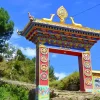
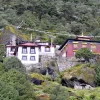
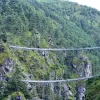
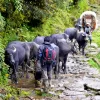

Excellent






Apart from arranging the entire Everest Base Camp Trek, Peregrine Trek made my emergency helicopter evacuation successful despite the busy trekking season. Before that, the trek was fantastic. The trekking guides handled us very carefully; nothing was too much trouble for them. They even offered to carry our hike bag pack when the going got too harsh. The porters were awesomely fantastic. Every food we had at our stop was just so delicious and energetic; I had no space left for the snacks I stocked up for hikes. At the office, Mr. Pradip was way too concerned and on time with us for our hotel transfers, airport pickup, and so on.
I highly recommend PEREGRINE TREKS as a trekking company. Client safety and satisfaction are their main priority. All the best, and we will return.

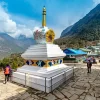

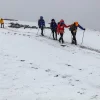

Excellent






We recently are back from completing one of the excellent treks in Nepal, the Everest Base camp Trek. Before the trek, I unfortunately suffered food poisoning in Kathmandu, but Peregrine treks were much of a help to rearrange everything and make our trip back on track. We started our trip, and on the first day, we acclimatized to Namche Bazar, where the accommodation and altitude were perfect. Our trekking guide and porter were brilliant on the EBC trek; we always felt safe and in good hands.
Pradip was a beneficial and easy-to-communicate guy at the Peregrine office. I recommend Peregrine Trek to everyone visiting Nepal for the excellent trek and pass on a helpful trekking review.
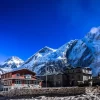
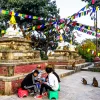
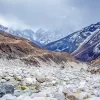
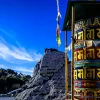

Very Good





